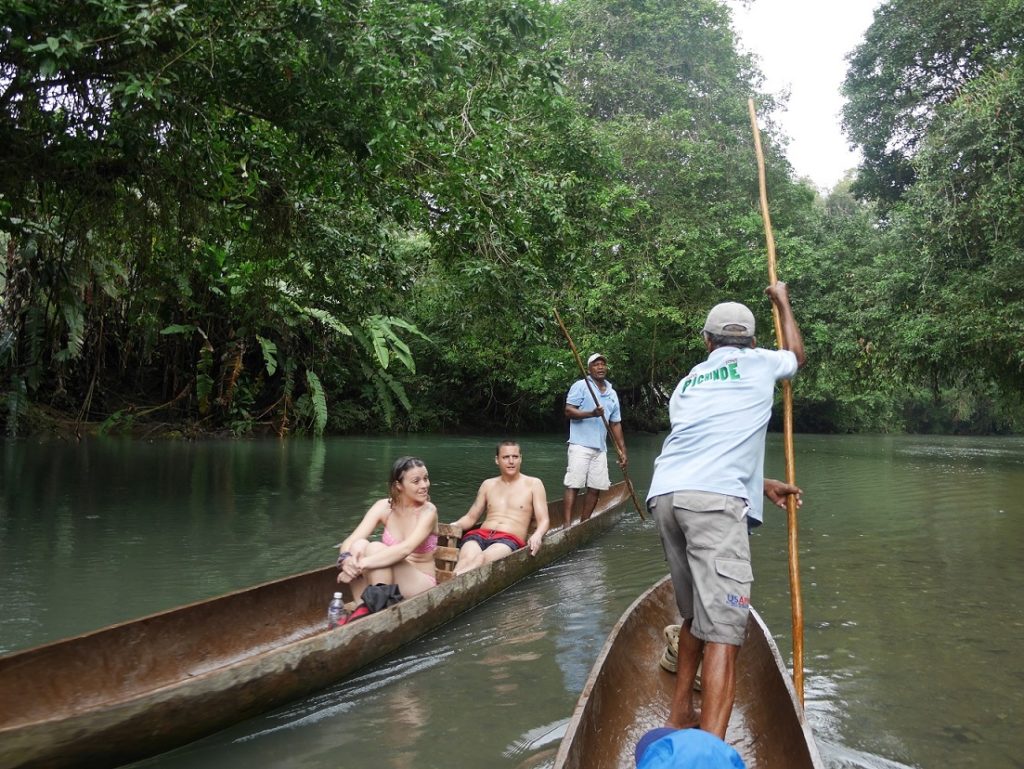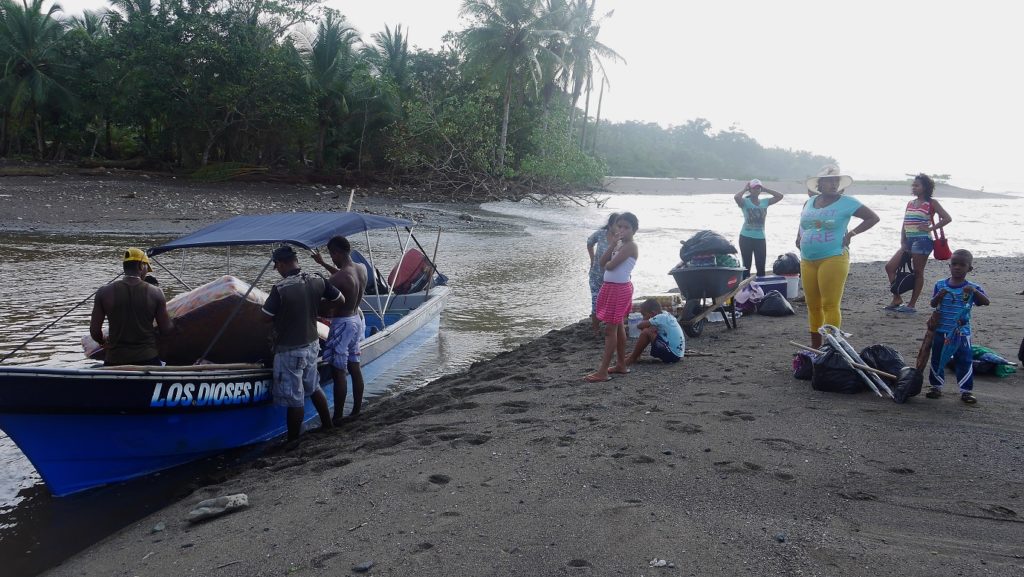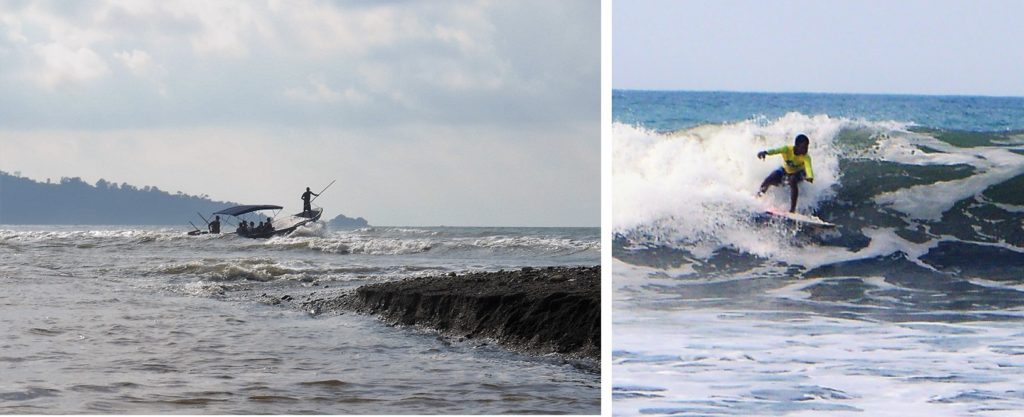Nuquí, on the Chocó coast
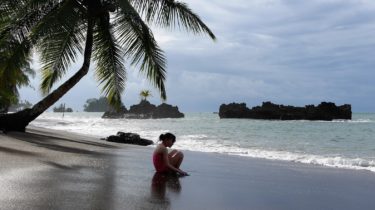
The Chocó coast of Colombia is truly spectacular, where misty jungle-clad hills meet the restless Pacific Ocean. This is a wild place where many of modern luxuries are left behind, and travel – often in small launches through lashing rain – is arduous, but the scenery will leave you breathless and the friendly local and laid-back rhythm of life tuned to nature will leave you spiritually refreshed.

By all indicators the large Chocó department is Colombia’s worst off in terms of development, and infrastructure such as roads and government institutions are minimal. In fact this can be said also for the Pacific Coast further south, in areas such as Tumaco. For more general information on this areas, see my blogs on the Alto Baudo area of Chocó, the coast of Tumaco and the sad story of a backpacker killed by armed groups after he was lost in the Chocó’s Darien Gap.
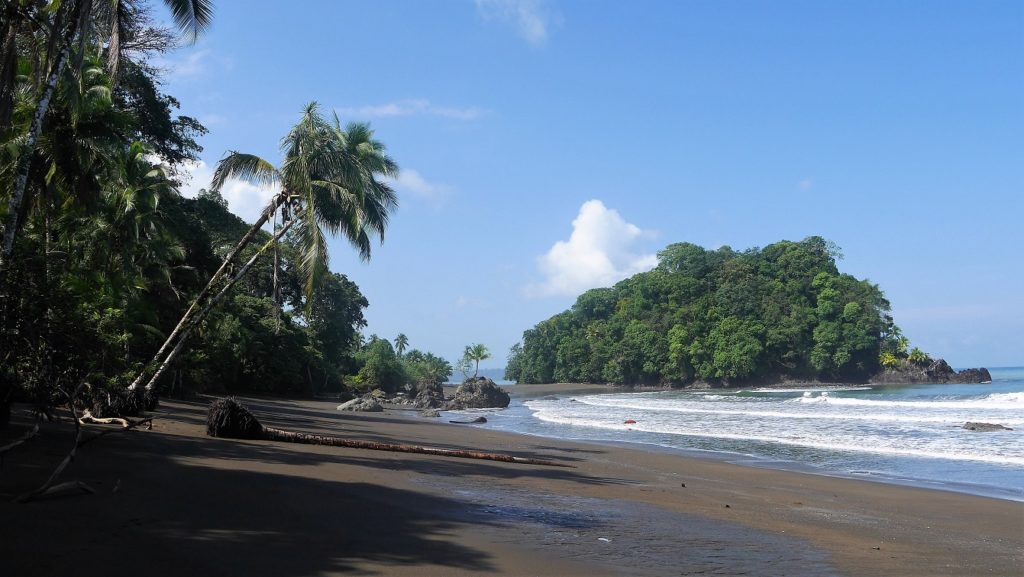
But the coast of the Chocó is very much open for tourism and thankfully free of the conflict – over cocaine, gold and human trafficking – that plagues other parts of the department. This is partly due to its isolation, since there are no roads linking the coast here to the rest of Colombia, or even anywhere else in the Chocó, and the only realistic access is by plane or boat.
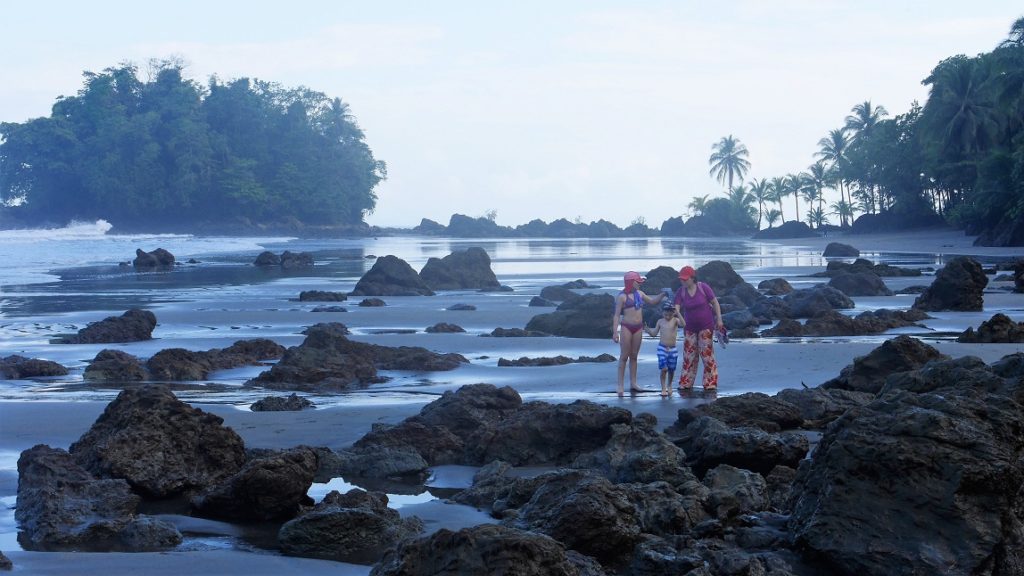
Getting there
Most travellers fly in to the small airfields at Nuqui or Bahia Solano, although there is also the option to come up the coast by slow coastal freighter or speedboat from the large Pacific port of Buenaventura (which is now only 3 hours from Cali). You could also travel overland to Istmina in the Chocó and then take motorboats to the coast at Pizarro (Rio Baudo) or Docordo (Rio San Juan) but both these are conflict areas so this is not recommended.
So assuming like most people you fly in, you will arrive at the town of Bahia Solano or Nuquí. Most travellers head to the beaches outside the base towns which are not so pretty.

Nuquí can be reached by plane from the cities of Quibdó, Medellin with scheduled flights by Satena (www.satena.com.co) with connecting flights to Bogota. There are regular charter flights where you can book seats with TAC, Searca or San German. Some charters originate in Bogota and fly direct to Nuquí, and are linked to large hotels, but flight-only tickets are available. Note that because of heavy rain on the Chocó coast, flights are frequently delayed by many hours. Nuquí and nearby villages are linked to the large Pacific port of Buenaventura by slow cargo-passenger boats (24 hours) and rapid motorboats (6 hours), known as la ruta, and north to the larger coast town of Bahia Solano (3 hours from Nuquí). Note that hiring boats to take you (expreso) can get very costly ($200,000 from Termales to Nuquí). At low tide you can hike parts of the coast i.e. from Guachalito to Termales and on to Arusi.
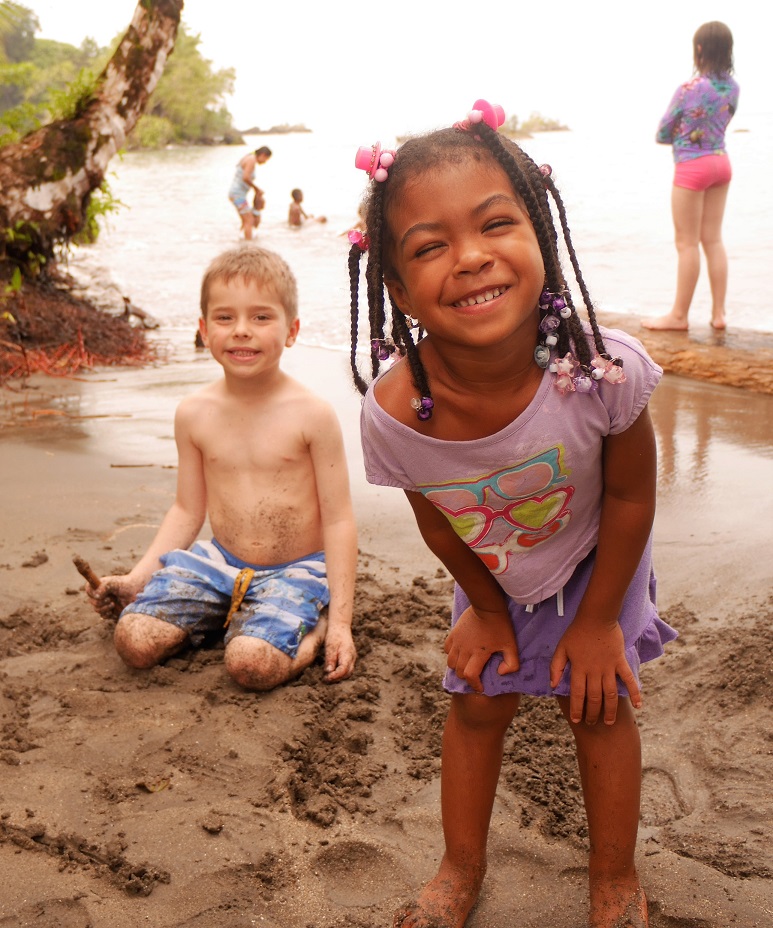
Our family travelled to Nuquí and were met by a locals, Damaris and Diego, who fish but also have cabañas to hire at Mar y Rio on the beach at Guachalito, 45 minutes by boat across the Bay of Tribugá. The coast here has rocky headlands, small sandy and rocky coves, and some stretches of long sandy beaches such as at Termales. The tidal range is high, up to ten metres, and at certain phases of the moon with king tides the surf line reaches into the palm trees. Since most cabañas are close to the beach, this means the sea is right on your doorstep.
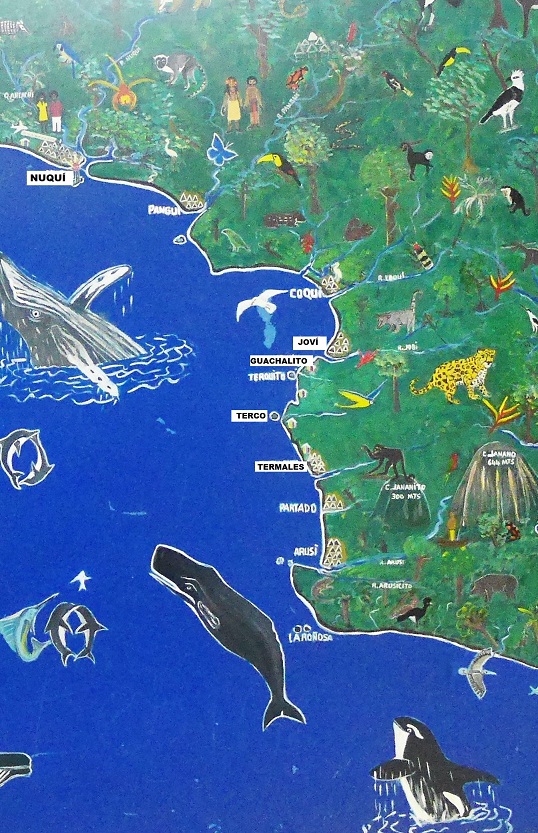
The Pacific Ocean can defy its name and be quite rough, with 2-metre swells and crashing surf, and from some beaches the fishing boats – and the one you are in – might well do a hair-raising launch off the beach and through the surf. Put on your life-jacket, pray to your gods, and trust your driver: the local fisherman take on these seas every day so are experts and rarely mess up. But do expect the occasional soaking from a stray wave, or the rain squalls that can pop out from the mountains even on a sunny day.
If you are a backpacker with time on your hands you can take a more leisurely – and probably cheaper – approach and just rock up to villages like Guachalito, Joví, Termales or Arusi and just find cabins or rooms to hire. You can also walk parts of the coast at low tide from village to village, or get the panga publica boat.
.
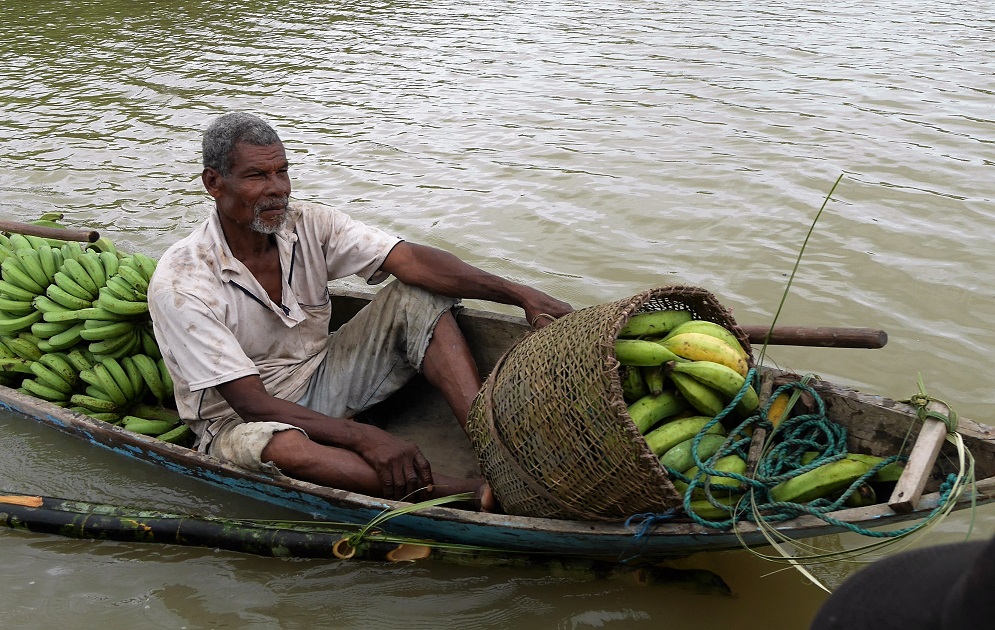
What to bring
Everything gets wet, so pack in plastic bags and use sealing containers for cameras and documents etc. Bring light easy-dry clothes, and a waterproof top for rainy boat trips (can get cold). You will need strong sandals to walk the rocky headlands (on the beaches you can go barefoot). Mask and snorkel is an option, but a torch and insect repellent are essential.
Our cabin a Mar y Rio was basic but clean, and cool enough right on the beach not to need any fans or airco. We all slept well and there were not many biting bugs, though at dusk we covered up and used insect repellent. Food is basic on the coast, and supplies are limited, but we got great fish with arroz con coco, platano and some local fruits (papaya, pineapple etc), and we never went hungry.
We paid 130,000 pesos/person/night, including thee meals and boat transfer from Nuquí. Close by were larger luxury ‘eco’-lodges, such as Nautilis and El Cantil, mostly owned by outsiders, which cost a lot more, but we were very happy with Mar y Rio and the chance to spend time with a Chocoano family.
